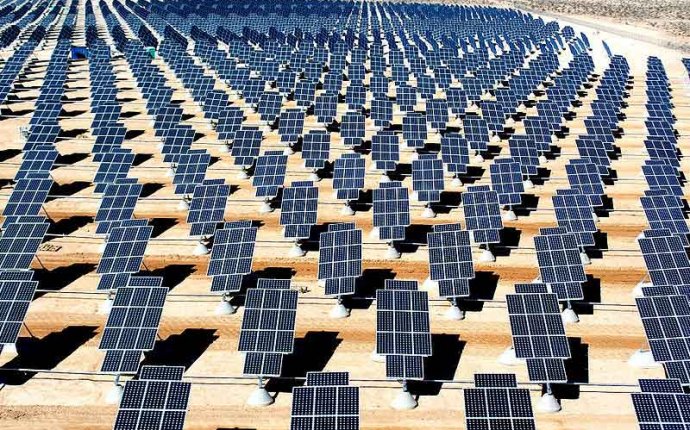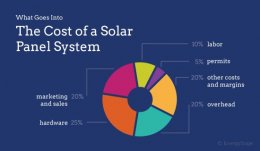
Are solar Panels expensive
 While the most expensive part of going solar is paying for the equipment, it still only represents 25 percent of the overall expense. Soft costs, or the outlays that installers spend just trying to find you and appeal to you, also contribute a significant percentage. Here’s a breakdown so that you can understand the cost of a solar panel system, plus tips on how you can save money!
While the most expensive part of going solar is paying for the equipment, it still only represents 25 percent of the overall expense. Soft costs, or the outlays that installers spend just trying to find you and appeal to you, also contribute a significant percentage. Here’s a breakdown so that you can understand the cost of a solar panel system, plus tips on how you can save money!
The National Renewable Energy Lab (NREL) has completed a number of pricing analyses of the cost of a residential solar installation. The lab broke down the total price of buying a solar energy system for one’s house as related to the total number of watts that the system should produce (a calculation sometimes referred to as the gross cost per watt.) The Lab then went on to break down that per watt cost into smaller subcategories.
We have built upon this analysis, augmented it with data culled from our own network of solar installers and distributors, and broken down the average cost of going solar into six categories.
As with so many things in life, there are some factors you simply can’t control. Fortunately, however, there are a number of ways that you can drive down the costs of your future your solar energy system.
Marketing and Sales: Your Installer Can Help With Saving Money
Learn About Solar: Installers spend a huge amount of time and money simply trying to educate shoppers about solar energy systems. If you are a solar-interested shopper, you can lower the amount of time your installer needs to spend educating you on the technology by using free public sources of information, such as the Department of Energy’s website. The more educated you are about your potential installation, the more time you’ll save both you and them.
Shop Around For a Good Deal: Comparison-shopping websites are already popular when booking flights or hotel deals, and now that same technology is making its way into solar shopping. By using an online solar marketplace to obtain competitive bids from multiple installers, you can lower the “soft costs” that your installer must incur to find customers — and they, in turn, can pass those savings on to you!
Hardware Choices: Which Solar Energy Systems Are Right For You?
Type of Panels: The more efficient the solar panel, the more expensive it is. In most cases you actually don’t need the most efficient equipment to produce all the electricity that your home needs. EnergySage has analyzed testing information, and classified panels into three performance categories, premium, standard and economy.
Type of Inverter: There are three main types of inverters; centralized inverters, string inverters, and power optimizers. Centralized inverters serve the whole system, while string inverters and power optimizers are attached to each panel in a system. String inverters and power optimizers are generally more expensive than centralized inverters. Again, think of how efficient of a system you really need.
Type of Mounting System: A solar energy system can be installed on the roof of a building or on the ground. If the system is installed on the ground, it can be equipped with a tracking system to maximize its energy production. A more complex mounting system will increase your costs, so think about what’s really necessary for your own installation. Remember that you’ll want to have the solar panels facing south at a 30-degree angle for maximum production.
Labor, Installation and Permitting: Added Complexity Can Increase Costs
Warranties: From workmanship to equipment, having warranties on your solar energy installation can ensure that you get the most power from your system. Make sure you’re hiring the right installer that offers the right warranty to meet your budgetary requirements.
Complex Roofs: If your roof has multiple levels, an unusual angle, or dormers, installing your system may be more complicated than usual. Your installer should arrange the panels for optimal energy production, but added effort will increase costs. Distributing solar panels across multiple levels will add complexity, as will installations on certain roof types (such as tile and slate).
Landscaping: If you need to trim branches or landscape your area for optimal energy production, this may also add to the total cost of your system. To save money, consider doing this work yourself ahead of time (safety permitting!) or hiring a local tree pruner.
Improving Your Electrical System: Though unlikely, your electrical system could require an upgrade in order to be brought up to code. If needed, this added work would increase the costs of your solar installation. To spread these costs out, consider upgrading your electric system in one month and then going solar in the next.









